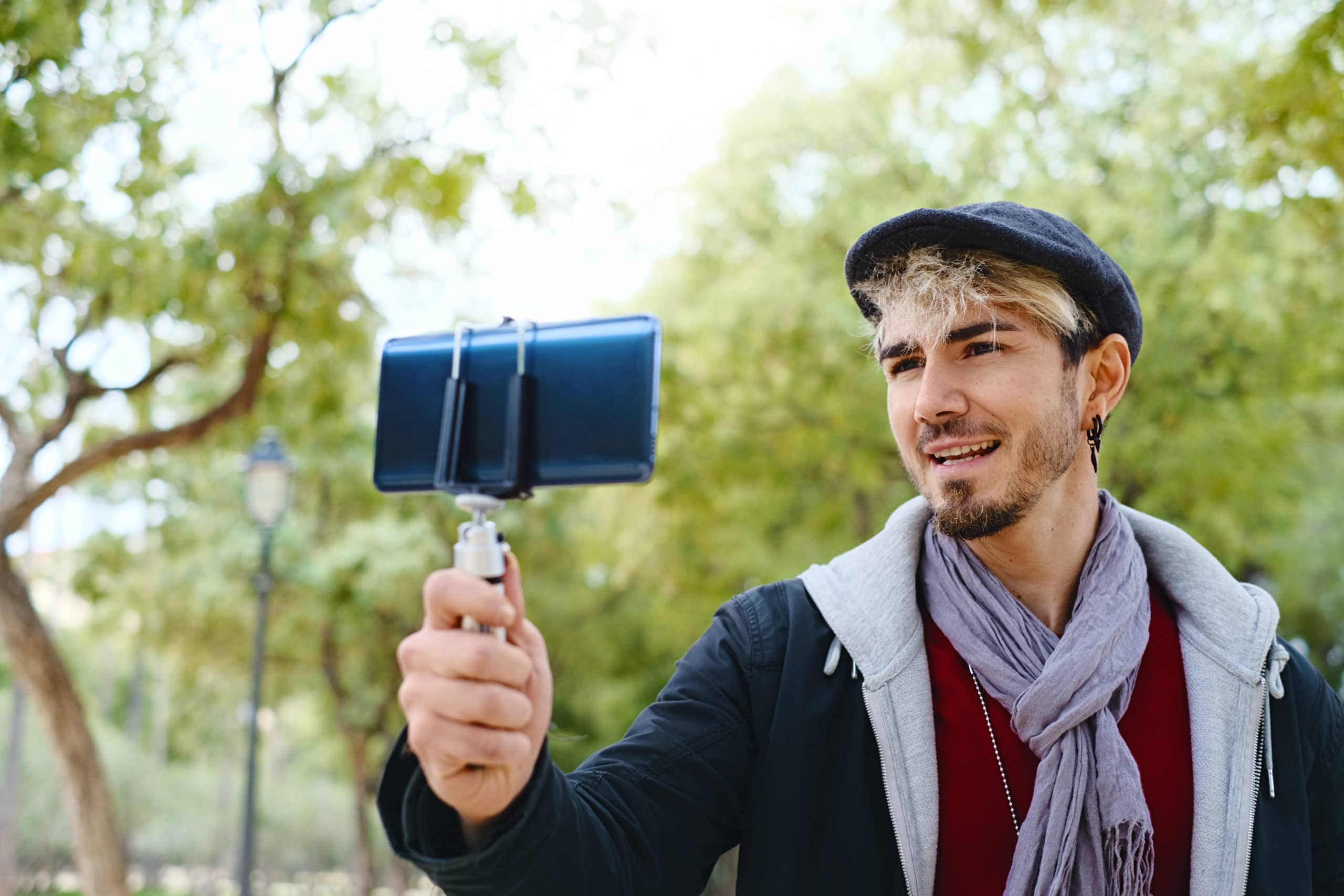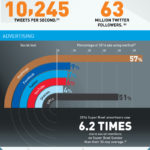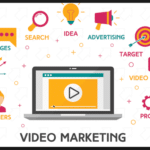There’s a key difference between social media marketing and social media advertising. Marketing through social channels typically involves a strategy that revolves around organic interactions—generating likes and shares through the overall shareability and engaging nature of your content.
Social media advertising is a step up from organic marketing. Here, your advertising campaigns will be paid. It’s a good way to increase traffic and brand awareness quickly. But in order to get the most from your paid advertising efforts, you’ll need to know a bit more about how it works. In this guide, we’ll discuss the key concepts of social media advertising so that you can maximize on your ad spend.
What Platforms Offer Social Media Ads?
When you’re getting started with paid advertising, you’ll find that all the major social media platforms—Facebook, Twitter, LinkedIn and others—offer paid advertising of some type. Each has its own set of advantages for you to consider, and every platform has a different subset of users that you may want to target with your advertising strategy.
According to Pew Research, Facebook is among the most popular social platforms for all age groups and demographics, which means this is a great platform to utilize if you want to reach a very broad and diverse audience. When designing ad campaigns for Facebook, there are a specific set of objectives that you’ll want to pursue.
- Facebook ads are a great way to build brand awareness. Simply having paid ads show up in user feeds lets people know about your company and your offerings.
- The biggest objective with Facebook ads is to create conversions. Ads should be designed to entice clicks to your website or sales page in order to generate sign ups and sales.
- There are lots of other things you can do with Facebook ads beyond sales and generating website traffic. If you have an app, you can use ads to encourage installs, or include a call to action for people to reach out to you via Facebook Messenger.
Where ad formats are concerned, Facebook is perhaps the most versatile platform out there. On other platforms, like YouTube, for example, even though there are several different types of ads, they all revolve around video content. With Facebook, it is possible to create photo, video, carousel ads, stories ads, slideshows and more. That makes it a great platform for producing diverse ad content that showcases your products or services in a variety of innovative ways.
YouTube
YouTube is the other big social platform. Here, you’ll find just as wide and diverse an audience as Facebook since the majority of U.S. adults visit YouTube regularly to consume video content. On YouTube, your objectives will be similar to that of Facebook:
- The key goals are to collect leads and make sales.
- These ads are also a great way to increase your brand awareness, and because they show up across so many different demographics, they are fantastic at extending your reach.
- Video ads are most likely to present products or services, which helps people understand what you offer, and thus allows them to consider your products as a solution to their needs.
There are a few different types of ads available through YouTube. These include TrueView ads, which are usually 30 seconds long but skippable after the first five seconds. Then there are the non-skippable ads, which are shorter at a maximum of 20 seconds, and can appear either at the beginning of a video or at points in the middle of a video that is 10 minutes or longer. Finally, there are six second Bumper Ads that show up at the end of some YouTube videos.
It’s important to keep ad length in mind when designing a YouTube campaign. For example, where TrueView ads are concerned, the overwhelming majority of users will hit the skip button at the five second mark—which means that you need to design ads to present the most important information within those first few seconds.
Instagram is a subsidiary of Facebook, and thus, this platform shares a lot in common with Facebook when it comes to advertising. As with Facebook and YouTube both, your primary objectives on Instagram will be to build awareness, generate conversions, and put your offerings out there for consumers to consider.
Here, you’ll find a somewhat narrower set of demographics, which makes it a great platform to use if you’re targeting certain subsets. In general, Instagram is more popular among women than men, and the highest share of visitors comes from the age 18 to 29 age group. It’s popular to a lesser extent among the age 20 to 49 age group, while users older than that make up a very small share of Instagram’s audience.
On Instagram, there are four types of paid ads, similar to those Facebook offers:
- Photo ads
- Video ads
- Carousels
- Collections
These are all great tools to put your brand in front of viewers. When it comes to increasing your reach, Instagram advertising can be extremely effective depending on your target audience.
After YouTube, Facebook and Instagram, Pinterest is the next largest social media platform, with 28% of U.S. adults using it as of 2019. The demographics here skew overwhelmingly female, with close to half of women using Pinterest to consume content. Among age groups, it shares broad popularity across people aged 18 to 49, which makes it a great way to extend your reach.
As far as social media advertising goes, Pinterest offers only one type of ad, which is the Promoted Pin. They look just like regular Pins, only when you pay for them, you are paying for them to be placed in front of a wider audience than you’d achieve through organic social media marketing.
Even though there is only the one type of ad, Promoted Pins allow you to do quite a lot. They’re great for building awareness and reach while driving traffic to your website. You can also use them to feature videos or encourage app installs. If you offer a specialized product, like something innovative designed to be used around the home, these ads are a great way to feature that product.
LinkedIn is the place to be if your target audience includes professionals. Men and women use it in roughly equal proportions, but the age group here skews a bit older than some other social media platforms, with LinkedIn being most popular among the age 25 to 29 age group followed by those aged 20 to 49. As with other platforms, the goal is to create brand awareness, drive traffic to your website, and make conversions.
To do this, LinkedIn offers a few unique ad products:
- Sponsored Content: These are ads that appear in users’ news feeds, and they’re one of the best ways to increase your reach on LinkedIn. With these, you’ll most often be showcasing your expertise as an industry expert.
- Sponsored InMail: InMail is part of LinkedIn’s messaging system. Just like if you were to send out marketing emails, Sponsored InMail allows you to send targeted messages straight to a particular user’s inbox. One of the nice features about these over marketing emails is that Sponsored InMail is designed to be delivered when a user logs onto LinkedIn. This way, your message doesn’t get buried among dozens of newer ones in between logins.
- Text Ads: These are small ads that can appear in both the newsfeed and LinkedIn’s sidebar. They include a thumbnail plus a snippet of text, much like a banner ad.
What is interesting about LinkedIn advertising is that it gives you three very distinct ways to build awareness. Use each to position yourself as an industry expert, showcase your product or service, and to put your offerings in front of users.
Twitter advertising is unique in that it features a slightly different set of objectives than many other social media platforms. Here, as with other platforms, you’ll be focusing on creating awareness and driving traffic to your site.
However, much of Twitter strategy also focuses on engagement. This means that when you use paid Twitter ads, a big part of your strategy will revolve around attempting to start a conversation on Twitter. Thus, ads should be designed to encourage social follows, likes, tweets and retweets.
Where demographics are concerned, Twitter skews predominately toward men, and it is most popular among younger age groups, with the largest share of users in the age 18 to 24 group.
What kind of ads does Twitter offer? It revolves around the promoted tweet, which can work in one of two ways. Either you can pay to have up to 10 of your organic tweets promoted per day, or you can design tweets specifically as ads to be placed in front of specific Twitter demographics.
How to Plan a Social Media Advertising Campaign

Identify Your Goals
Identifying your goals is one of the core components to choosing which social media platforms to use. Each platform has different strengths, so for example, if you want to position yourself as an industry expert, then LinkedIn might be the way to go. If you’re going for reach and social shares, then you’ll want to consider platforms like Facebook.
Choose the Types of Content You Will Share
The type of content you’ll be sharing also plays a key role in choosing social media platforms for your advertising. Video ads work best on YouTube and other video-centric platforms. If you’re creating largely photographic advertising, then Instagram might be your best bet. Consider all the types of advertising material you will produce and use this information to help guide your choices.
Choose Social Media Platforms
Once you’ve narrowed down your goals and the types of content you will share, the next step is to look at social media platforms individually. It may be that you’ll want to make different choices based on the demographics or target audiences available on each platform.
To use photographic content as an example, one might think that Instagram is the go-to choice for all kinds of imagery. However, if Instagram demographics don’t align with your business’s target audience, then you’ll want to consider other avenues that not only support still images, but better fit your target audience.
Another thing to remember about social media advertising is that it’s best to keep it simple, at least initially. Rather than targeting a broad variety of platforms to gain as much reach as possible, you’ll be better served to focus on a small handful of platforms. Prioritize the quality of your advertising content over the quantity of platforms to optimize your reach and brand awareness.
How to Support Social Media Advertising with a Sales Funnel

Sales funnels have three basic phases, which are awareness, consideration, and the transaction. The ad itself is part of the awareness phase. This is what a potential customer sees on social media that makes them aware of your offering.
If they click the ad, then the next step moves them into the consideration phase. Here, customers are viewing a website or a landing page specifically designed to present them with the information they need in order to choose your product.
Most often, users are directed to landing pages during the consideration phase because landing pages allow you to target specific subsets of your target audience. For example, if you are selling word processing software that caters to both professionals and home users, then you will need to create landing pages designed for both of these groups since professionals and home users will have different needs and expectations.
The transaction is the last part of your sales funnel, and this is where the customer makes the purchase decision or decides to make a signup. Your landing page should be designed to make this easy. The best way to go about it is to include a call to action on the landing page along with a link or an easy-to-spot button that encourages viewers to take an action—purchase, sign up for your email list, or whatever action you would like for them to take.
When Should You Publish Paid Ads?
Timing is important where paid advertising is concerned, and for this, you will want to refer to statistics relevant to the social media platforms that you will be using. All platforms have different days and times when activity is highest—and to increase your reach to the maximum, you’ll want to carefully target these times. More viewers online equates to more potential to make an impression.
The same goes for post frequency. There is such a thing as too much. Again, you’ll want to research your platforms of choice to learn how often you should post a paid ad—and make sure to keep up with current trends since things like post frequency and timing can change over time. Where frequency is concerned, less is often more. The last thing you want to do is inadvertently annoy viewers with advertising that is too frequent. Strike a careful balance that keeps your business in front of viewers often enough that they will remember you, but not so often that it seems spammy.
To help you accomplish this, there are a variety of social media advertising tools that allow you to automatically schedule your content. These can be extremely helpful to streamline your day to day social media activities while ensuring that your posts go out at the perfect times.
How to Improve Your Social Media Advertising Campaign
Social media advertising isn’t a “set it and forget it” type of campaign. In order to make the most of your advertising dollars, once you’ve started a campaign, you should continuously analyze it and make improvements as necessary to increase engagement.
- Use analytics tools to track impressions, views, likes, shares and so on. If a particular piece of content is outperforming other pieces of content, then you may want to shift strategies somewhat to focus on what is most popular.
- Always double check your ad copy, and keep an eye on the types of words and phrases that motivate your target audience. This information will help you design even better ads in the future.
- Keep your landing pages fresh. Make sure they’re displaying current information and be certain that all links and elements are functioning as they should. Broken links or embedded videos that stop working could halt a potential customer while they are still only partway through the sales funnel.
There’s a lot to learn about social media advertising, but once you learn the basics, you’ll be able to use that information to extend your business’s reach and increase signups, sales and other actions you’d like clientele to make. Approach this type of advertising with an eye toward quality and toward giving viewers what they want, and you’ll get more sales for the money spent on paid ads.







